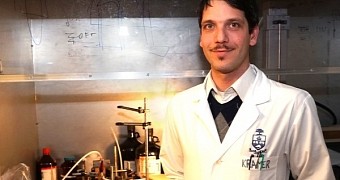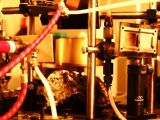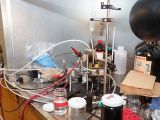Solar cells have come a long way from being relegated only to large panels to being possible to integrate in more or less anything, however small. In fact, there is now a way to spray them on any surface and object.
In a sense, this has been possible for a long time. However, it's one thing to be able to add solar cells to something and another to implement a system capable of taking that energy and using it.
Moreover, solar cells aren't all that efficient at the best of time. Mostly due to the irony of them growing hotter the more sun shines on them, and losing efficiency the hotter they become.
Methods to mitigate that effect are being investigated, but even the most advanced type of solar cell can only scrape 40% efficiency, and that's huge compared to conventional ones.
Quantity is a quality all on its own, however, and a team of researchers from the University of Toronto have created a way to ensure that solar cells can reach a very large quantity indeed.
Spray-on solar cells based on CQD
CQD stands for colloidal quantum dots and is a type of material used in certain types of solar cells, with the ability to absorb a wider range of the solar spectrum than normal.
University of Toronto scientists have developed a special liking for CQD and believe they can be used as the absorbing photovoltaic material in spray-on solar cells of the multi-junction variety.
Multi-junction solar cells have small and large dots sitting alongside each other, widening the cells' harvesting potential. It's an extension, of sorts, of the way CQDs can be tuned by altering the size of the nanoparticles.
The newest type of CQD from the University of Toronto is unique in that it doesn't bind with oxygen atoms, meaning that no dots lose their electrons and become useless.
This leads to a solar efficiency of 8 percent, for now. Low indeed, but sufficient to power new kinds of devices. Also, good enough considering that the spray-on method means you could coat basically everything you own in it, like bike helmets and outdoor chairs.
Until now, only batch processing allowed CQDs to be integrated into materials, but the spray-on method means that any film or plastic is now eligible.
“My dream is that one day you’ll have two technicians with Ghostbusters backpacks come to your house and spray your roof,” says Illan Kramer, a post-doctoral fellow with The Edward S. Rogers Sr. Department of Electrical & Computer Engineering at the University of Toronto and IBM Canada’s Research and Development Centre.
Availability and application
The SprayLD system is made from cheap, easy to find materials and components (air brushes, a spray nozzle used to cool steel in a mill) so it should be easy enough to market. Unfortunately, no ETA was given for anything of the sort.

 14 DAY TRIAL //
14 DAY TRIAL // 



